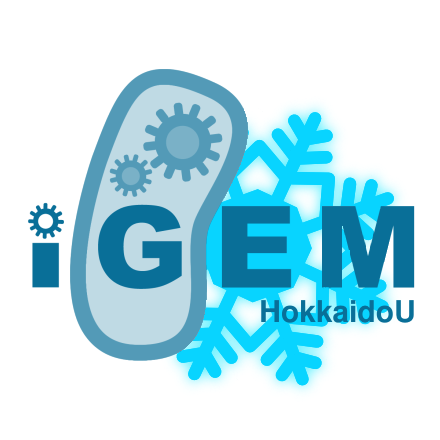Team:HokkaidoU Japan
From 2011.igem.org
| Line 1: | Line 1: | ||
| - | + | [[File:IGEM_HokkaidoU_Logo_transparent.png|50px|right]] | |
| - | [[File:IGEM_HokkaidoU_Logo_transparent.png| | + | |
{| style="color:#1b2c8a;background-color:#00B8CC;" cellpadding="3" cellspacing="1" border="1" bordercolor="#fff" width="62%" align="center" | {| style="color:#1b2c8a;background-color:#00B8CC;" cellpadding="3" cellspacing="1" border="1" bordercolor="#fff" width="62%" align="center" | ||
Revision as of 01:42, 3 September 2011
| Home | Safety |
|---|
Preliminary project description
This year, we aimed to further develop of "Dr. E. coli": our project of iGEM 2010. Dr. E. coli can inject desired protein molecules into a target eukaryotic cell through a syringe like organelle named Type 3 Secretion System (T3SS). Pathogenic gram-negative bacterium such as Salmonella has T3SS. In nature it is used to inject virulence effector proteins into a target eukaryotic cell. Last year, we showed that T3SS works in E. coli by injecting GFP into RK13 cells.
This year, we tested its performance and tried to make this injection system more convenient. To achieve these goals, we designed a plasmid backbone which can instantly produce ready-to-inject fusion proteins from ordinary biobrick part. Using it, we tried to further characterize the system. For instance, we screened a library of proteins to see which of them we can inject.
For human practice, we held a Science Gallery. We exhibited awesome photographs related with biotechnology in public. We tried to catch the pedestrians’ interest in current synthetic biology and investigated their thoughts on it.
 "
"
